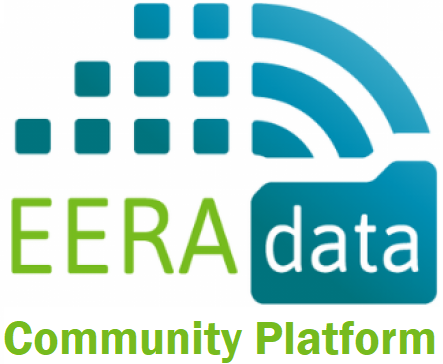The European Union has prioritized materials as a Key Enabling Technology (KET) to enable the transition to a knowledge-based, low carbon, resource-efficient economy and has proposed a materials roadmap to address the technology agenda of the SET-Plan. With the imperative to change the energy technology mix to respond to the challenges of decarbonization and security of energy supply, the need for new materials and processing routes is overriding. New efficient and cost-competitive energy technologies are urgently needed.
In this respect, materials research and control over materials resources are becoming increasingly important in the current global competition for industrial leadership in low carbon technologies. Two EERA Joint Programs (Nuclear Materials and AMPEA) are directly involved in materials research for energy applications and several other Joint Programs are interested in new materials to improve the efficiency of energy technologies. To speed-up the discovery of new materials for energy technologies, Innovation Challenge No. 6 of the Mission Innovation Initiative is devoted to the discovery of new materials. This Innovation Challenge aims at accelerating the innovation process for high performance, low-cost clean energy materials and automating the processes needed to integrate these materials into new technologies. The challenge is to combine advanced theoretical and applied physical chemistry/materials science data, as well as data on the life cycle of materials and material compounds with next-generation computing infrastructures, artificial intelligence, and robotics tools. The goal is to create a fully integrated approach.
Materials research is characterized by strong multidisciplinary research in which both, converging technologies and cooperation, should be exploited to speed up application-oriented research activities. This is not always the case due to the extremely different technological fields where materials are employed (in the energy sector and beyond). Indeed, each technological field has often developed its own terminology, experimental set-ups, research procedures, and, consequently, its own standards in data management.
Therefore, it can be argued for the field of materials for energy that openness of data is low to medium, re-usability is low to medium, and barriers are high. Finally, FAIRification actions put in place are rare (low to medium). The availability of an open data infrastructure covering as many research fields as possible could increase opportunities to develop new research programs, defragment the materials for energy community, avoid the duplication of research activities, speed-up the discovery of materials, and increase the understanding of how energy systems could better benefit from existing and new materials.
Many databases are already available but a large amount of data is currently produced in laboratories, not organized for sharing. Moreover, databases do not follow common formats preventing interoperability and re-usability. In view of the intended automatization, it is important that access to databases is machine-actionable. Finally, due to the strong connection with industries, questions of open data access need to be explored and new business models need to be developed.
| Name of database | Type of metadata provided | Extend of metadata provided | Level of implementation of FAIR/O principles | Frameworks for metadata used | Technical implementation of metadata |
|---|---|---|---|---|---|
| MATDB | Noting that the primary data object is a combination of the the test result + material (i.e. production, composition, heat treatment, microstructure, etc.) + specimen + test condition + documents entities, the source (i.e. bibliographic and provenance) entity corresponds to the metadata. | Approximately twenty metadata fields exist, noting that not all are mandatory. | The metadata for approximately 25% of the content of the database is broadly compliant with the FAIR data principles (details at WS1UC3 – Notes from afternoon session ). This is because approximately 25% of the content is enabled for citation and hence complies with the DataCite metadata schema , which itself is aligned with the Dublin Core . | Thesaurus and procedural standards | XML, RDF, Excel |
| NOMAD | Metadata includes: administrative (location, access privileges, who, when, where) and provenance of data (how). Each metadata, besides its name, can have up to six additional attributes: Type, Description, Data Type, Shape, Units, Derived (optional). Relations between metadata are visualized by graph diagrams. More info at NOMAD Meta Info page. | Extensive metadata | F1;F2;F3;F4 100%. A1;A1.1 100%, A1.2 0%, A2 100%. I1;I2 100%, I3 N/A. R1;R1.1;R1.2 100 %, R1.3 50%. | Taxonomy | JSON |
| Urban Mine Platform | Metadata includes: administrative (e.g. contact info), descriptive (e.g. use limitation, data quality statement), provenance (e.g. resource), structural and others like file identifier, descriptive keywords etc. | Extensive metadata is provided in form of basic metadata and full metadata | Findable: F.1.; F.2.; F.3. – YES. F.4. – N/A. Accessible: A.1.; A.1.1.; A.1.2. – YES; A.2. – N/A. Interoperable: I.1.; I.2.; I.3. – YES; Reusable: R.1.; R.1.1.; R.1.2.; R.1.3 – YES | Taxonomy | XML file |
| Crystallography Open DB | Single 7-digit identifier assigned to the data. Full history of data additions and changes is provided (with dates, commiters, modified files, etc). Metadata include: data upload date, revision number, URL of the data file in the repository, source publication author names and contacts (address, tel, email, etc), source publication title, journal, issue, doi, etc, method of structure determination, performed automoatic conversions | Extensive metadata | Findable: F1-YES; F2-YES; F3-YES; F4-YES. Accessible: A1-YES; A1.1-YES; A1.2-N/A; A2-YES. Interoperable: I1-N/A; I2-N/A; I3-N/A; I4-N/A. Reusable: R1-YES; R1.1-N/A; R1.2-YES; R1.3-YES | Taxonomy | RDF File |
